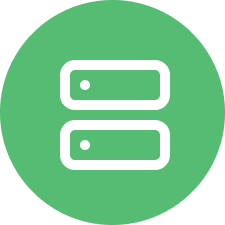Top 9 Benefits Administration Software in 2025
Efficient employee benefits administration is necessary for any company, particularly small and mid-sized businesses. The right benefits administration platform can streamline benefits enrollment, improve employee engagement, and ensure compliance with complex regulations.
This guide explores top solutions to help you choose the best fit for your organization's needs, whether it's a standalone tool or part of an all-in-one HR platform.

Why Does Your Business Needs Employee Benefits Administration Software?
Benefits administration software is a crucial tool for businesses of all sizes, especially as they grow and the complexities of managing employee benefits escalate. To optimize efficiency, reduce compliance risk, and focus on strategic HR initiatives, your company should consider implementing dedicated benefits administration software. Automating benefits administration tasks like eligibility verification, employee benefits education, and open enrollment frees up valuable time for your HR team to tackle more complex challenges.
A robust benefits platform also enhances the employee experience. Self-service portals empower employees to easily access and manage their benefits, while advanced reporting and analytics provide insights into plan utilization and cost-effectiveness.
Ready to simplify your benefits management? Explore our guide to the best HR software solutions and discover why GoCo is the top choice for seamless benefits administration software.
Check out our extensive list of Benefits Administration Software options below:
Top 9 Benefits Administration Software in 2025
Best Software
- GoCo
- Lumity
- PeopleKeep
- Bennie
- ADP Workforce Now
- TriNet (formerly Zenefits)
- PlanSource
- Selerix
- Namely
1. GoCo




Website: Visit GoCo
G2 Rating: 4.6 (386)
GoCo stands out as an all-in-one HR and benefits platform specifically tailored to the needs of small and mid-sized businesses. The platform offers a user-friendly interface, making it easy for both HR teams and employees to navigate.
GoCo’s benefits administration software features streamlined processes, from automatic calculations to built-in compliance. It also uses both EDI feeds and API syncs to securely send benefits data to carriers in real time to avoid costly mistakes and reduce billing discrepancies.
Employees benefit from GoCo’s self-service portal, which provides easy access to benefit information and allows them to view and compare plans when enrolling. This improves employee satisfaction and reduces the administrative burden on HR.
With GoCo, you can confidently manage complex benefits packages while ensuring compliance with ever-changing regulations, like ACA and HIPAA. The platform's advanced analytics also offer valuable insights into plan utilization and costs, empowering data-driven decisions.
Additionally, GoCo offers a quick overview of the benefits administration software along with transparent, competitive pricing. With customizable plans and no hidden fees, you can find a solution that fits your budget and can scale as your business grows.
Main Takeaway: GoCo comes out on top with its combination of features, user-friendly design, built-in compliance and calculations, and a strong focus on customer service. These make it a top choice for small and mid-sized businesses seeking to optimize their benefits administration.
2. Lumity

Website: Visit Lumity
G2 Rating: 4.8 (64)
Lumity’s benefits administration platform is designed to streamline and optimize the management of employee benefits. The platform simplifies tasks such as benefits enrollment, administration, and compliance. Lumity provides employees with access to a self-service portal where they can review and select their benefits, view plan details, and make changes as needed. This self-service capability helps reduce administrative overhead and improves employee engagement with their benefits.
One of Lumity's key features is its advanced analytics and reporting tools, which help organizations gain insights into benefits usage and costs. This can assist in making informed decisions about benefits offerings and identifying opportunities for cost savings. Additionally, Lumity's platform supports compliance with regulations such as the Affordable Care Act (ACA) through automated tracking and reporting features, helping businesses stay up-to-date with legal requirements.
However, some users have identified limitations with Lumity’s platform. While the system is praised for its ease of use, there are reports that it may lack some of the more advanced features found in larger benefits administration solutions. Integration with other HR or payroll systems can also be a challenge, with some users finding the process to be less straightforward than expected. Additionally, customer support has received mixed reviews, with some users experiencing delays or difficulties in resolving complex issues.
Main Takeaway: Lumity offers a user-friendly and efficient benefits administration platform with strong analytics and compliance tools. It is well-suited for organizations looking for a straightforward solution with insights into benefits management. However, potential users should consider the platform’s feature set and integration capabilities to ensure it meets their specific needs and expectations.
3. PeopleKeep

Website: Visit PeopleKeep
G2 Rating: 4.5 (50)
PeopleKeep provides a tailored approach to benefits administration with a focus on flexibility and employee satisfaction. The benefits point solution is designed to simplify the management of employee benefits through a user-friendly interface that allows for easy enrollment and management of various benefits plans. One of PeopleKeep’s standout features is its emphasis on personalized benefits options, including Health Reimbursement Arrangements (HRAs) and other employee-driven benefits, which can be customized to fit the unique needs of both the employer and employees. The platform also offers compliance support, helping businesses stay compliant with regulations by providing automated reporting and tracking tools.
However, some limitations were noted by users. While PeopleKeep is praised for its flexible and customizable approach, the platform may not offer as comprehensive a range of benefits administration features as some larger, more established providers. Also, as a benefits point solution, it lacks the additional HR software capabilities of other providers, which may not make it suitable for organizations seeking a broader suite of features. Additionally, some users have mentioned that the integration process with other systems can occasionally be complex and may require additional support.
Main Takeaway: PeopleKeep’s benefits administration platform excels in offering flexible and customizable solutions with strong compliance and customer support. It is particularly well-suited for organizations looking for personalized benefits options only. However, potential users should consider the platform’s feature set and integration complexities to ensure it aligns with their specific needs and expectations.
4. Bennie

Website: Visit Bennie
G2 Rating: 5 (1)
Bennie is a modern benefits administration platform designed to enhance the employee benefits experience, particularly for small to mid-sized businesses. Its core offerings include benefits management, employee engagement tools, and a strong focus on simplifying the benefits process for HR teams. Bennie is known for its user-friendly interface that makes it easy for employees to navigate their benefits options, enroll in plans, and access resources. The platform also provides decision-support tools that help employees make informed choices about their benefits.
One of Bennie’s standout features is its emphasis on personalized employee support. Bennie offers access to dedicated benefits advisors who assist employees with understanding their benefits, resolving issues, and navigating complex healthcare decisions. This personalized support is a key differentiator, helping to improve employee satisfaction and engagement with their benefits.
As a newer provider, there are currently few public user reviews of Bennie. While the platform is strong in benefits administration, it may lack some of the more advanced features found in larger, more established competitors.
Main Takeaway: Bennie stands out with its simplicity, employee-focused support, and effective benefits management capabilities, making it a good choice for smaller companies looking to enhance their employee benefits offerings. However, as a point solution, it doesn’t offer the additional features provided by all-in-one HR software solutions and may be difficult to scale with business growth.
5. ADP Workforce Now
Website: Visit ADP Workforce Now
G2 Rating: 4.1 (3457)
ADP’s Workforce Now is an HR software solution suitable for companies with 50 or more employees. The software provides complete benefits administration, talent management, payroll, and HR analytics services.
The platform excels in managing and automating the benefits lifecycle from enrollment to compliance, reducing the administrative burden on HR teams. Employees can easily access and manage their benefits, review plan options, and make changes through a dedicated mobile app, enhancing engagement and ensuring timely updates. Automatic data syncing minimizes manual entry errors, while automated alerts ensure compliance and accuracy in benefits management.
However, the software's extensive features, especially in benefits customization, may present a steep learning curve for new users, necessitating additional training. While ADP’s capabilities justify its premium pricing, some users find it challenging, especially smaller businesses with limited budgets. Additionally, while customer support is generally reliable, it can occasionally be slow, which may impact time-sensitive benefits administration tasks.
Main Takeaway: ADP’s benefits administration platform is well-suited for organizations needing a comprehensive and integrated solution with strong compliance and management features. However, potential users should be aware of the platform’s learning curve, potential support challenges, and its pricing structure to ensure it meets their specific needs and budget constraints.
6. TriNet (formerly Zenefits)

Website: Visit TriNet (formerly Zenefits)
G2 Rating: 4 (658)
TriNet’s HRIS platform aims to streamline the complexities of managing employee benefits, providing a range of features designed to improve efficiency and compliance. It uses a centralized interface for managing all aspects of employee benefits, from enrollment to claims processing, and allows employees to enroll in benefits through a self-service portal. The platform helps businesses stay compliant with complex regulations, including the Affordable Care Act (ACA) and other relevant laws, and also offers tools to help businesses analyze benefits costs and identify opportunities for savings.
While G2 reviews generally praise TriNet for its comprehensive HRIS offerings, there are some areas where users have expressed concerns. Some users have mentioned that the platform can be difficult to navigate, especially for those new to HR technology. When it comes to customer service, there have been instances of slow response times or difficulty resolving complex issues, and users have reported TriNet's pricing to be on the higher side compared to other HRIS providers, especially for smaller businesses.
Main Takeaway: Overall, TriNet's HRIS platform is a good solution for businesses seeking to streamline their benefits administration. However, potential users should carefully consider the platform's learning curve, customer service reputation, and pricing to determine if it aligns with their specific needs and budget.
7. PlanSource

Website: Visit PlanSource
G2 Rating: 4 (145)
PlanSource is a benefits administration platform designed to simplify and automate the entire employee benefits process for businesses of all sizes. It offers a full suite of tools to manage benefits enrollment, compliance, and communication, making it easier for HR teams to handle the complexities of benefits administration. The platform's user-friendly interface allows employees to easily enroll in benefits, access plan information, and manage their coverage options all in one place.
PlanSource stands out for its integration capabilities with payroll, HRIS, and insurance carriers, ensuring seamless data flow and reducing manual entry errors. Additionally, PlanSource provides decision-support tools that help employees compare benefits plans and make informed choices. The platform also offers reporting and analytics features, allowing HR teams to track enrollment metrics, monitor compliance, and gain insights into employee engagement with benefits.
However, some users have noted that the platform's customer support can be inconsistent, particularly during high-demand periods like open enrollment. Others have mentioned that while PlanSource offers a wide range of features, it can be challenging to navigate the more advanced tools without adequate training.
Main Takeaway: PlanSource is regarded for its comprehensive feature set and ability to streamline benefits administration and is a solid choice for companies looking to enhance their benefits management processes. However, potential users should evaluate if a benefits point solution like PlanSource can fulfill their company needs and also be prepared to invest time in training to fully leverage its capabilities.
8. Selerix

Website: Visit Selerix
G2 Rating: 4 (11)
Selerix is a benefits administration platform that focuses on streamlining enrollment and managing employee benefits. Key features include flexible enrollment options—such as self-service, call center, and face-to-face methods—along with decision-support tools that help employees make informed choices. The platform also excels in compliance management, automating ACA reporting and documentation to ensure adherence to federal and state regulations. Additionally, Selerix offers communication tools for HR teams, including automated messaging and document management systems, which keep employees informed throughout the benefits process.
Users generally appreciate Selerix for its user-friendly interface and comprehensive features. The platform's ability to integrate seamlessly with various HRIS and payroll systems is particularly valued, as it reduces manual data entry and improves overall efficiency. However, some users find the customization process to be complex and time-consuming, often requiring significant IT involvement.
Another common concern is the support and implementation process. While Selerix is seen as a powerful tool once fully implemented, some users report challenges during the onboarding phase, noting that customer support can be slow to respond during critical periods like open enrollment.
Main Takeaway: Selerix is a good choice for companies looking for a benefits point solution with its flexible enrollment options and compliance management, and integrates well with HRIS and payroll systems to improve efficiency. However, customization can be complex and time-consuming, often requiring IT involvement, and support can be slow. While effective for benefits management, it may not meet the needs of companies looking for a more comprehensive HR solution.
9. Namely

Website: Visit Namely
G2 Rating: 3.9 (320)
Namely is a centralized HR platform that streamlines the management of employee benefits, including medical, dental, vision, and retirement plans. The platform’s employee self-service benefits portal empowers employees to easily access and manage their benefits information online, enhancing convenience and efficiency. Namely also ensures adherence to complex benefits regulations, such as the Affordable Care Act (ACA) and Health Insurance Portability and Accountability Act (HIPAA). Additionally, Namely provides insights into benefits usage, costs, and compliance through its analytics and reporting tools.
While Namely offers competitive pricing, some users have noted issues with accuracy in benefits communications between the platform and carriers. Users also report that benefits administration within the platform can be more manual and time-consuming than other providers. Additionally, a recent merger has resulted in changing service offerings and a noted decline in customer service.
Main Takeaway: Namely’s benefits administration features and focus on compliance make it a valuable tool for managing employee benefits effectively. However, potential users should carefully evaluate their specific needs and budget to determine if Namely is the right fit for their organization.
How to Choose the Best Benefits Administration Software for Your Business
Happy, healthy employees are the key to business success. Investing in the right benefits administration software is crucial to optimize their potential and streamline your HR operations.
While solid benefits management is essential, today's HR departments require more. Consider additional features such as employee self-service portals, compliance management tools, and analytics capabilities to enhance overall efficiency and employee satisfaction.
When selecting benefits administration software, clearly define your specific needs and goals. Evaluate HR platforms based on their ability to meet your core requirements while offering valuable extra features. Some mid-sized businesses may benefit from a comprehensive benefits administration solution, while others might prefer a modular approach. With additional HR management capabilities like applicant tracking and performance management, you can effectively streamline your entire HR process so that everything can be tracked and managed in one place.

What to Consider When Choosing the Right Benefits Administration Software
Since there are countless companies offering an HCM/HRIS solution and benefits administration software, it can be hard to decide on just one. To make it easier, there are a few things you should consider to ensure you choose a provider that best fits your company’s needs. If you’ve already opted for a benefits administration software, you can still check if your current provider ticks all the boxes.
Here are the things you should consider before making a final decision.
-
 Review your finances and annual and monthly budgets to check how much you can spend on an HCM or benefits administration software. Utilize a ROI calculator to see how much time and money HR software can save your organization.
Review your finances and annual and monthly budgets to check how much you can spend on an HCM or benefits administration software. Utilize a ROI calculator to see how much time and money HR software can save your organization.
-
 Consider your company’s size, projected growth, and what features you need and can automate.
Consider your company’s size, projected growth, and what features you need and can automate.
-
 Check what additional features you need or will need in the future and research which software can provide it all for you.
Check what additional features you need or will need in the future and research which software can provide it all for you.
-
 See if the software takes care of compliance regulations, including the Affordable Care Act (ACA) and the Consolidated Omnibus Budget Reconciliation Act (COBRA).
See if the software takes care of compliance regulations, including the Affordable Care Act (ACA) and the Consolidated Omnibus Budget Reconciliation Act (COBRA).
-
 If you have already invested in other software, consider the integration capabilities of the new software you’re about to invest in.
If you have already invested in other software, consider the integration capabilities of the new software you’re about to invest in.
-
 List down all the benefits you want to provide to your employees. Then, crosscheck your list with the benefits provided by each software to check which software provides the closest set of benefits you want.
List down all the benefits you want to provide to your employees. Then, crosscheck your list with the benefits provided by each software to check which software provides the closest set of benefits you want.
With these points in mind, you can make an informed decision on which benefits administration software would work best for your business.
GoCo offers an all-in-one HR platform designed to simplify the complex world of benefits administration for small and mid-sized businesses. By consolidating HR functions, payroll, onboarding, benefits, and more into a single solution, GoCo eliminates the need to juggle multiple software systems with the adaptability to scale along with your business.
With features like electronic forms, provider management, employee databases, and self-service portals, GoCo streamlines HR processes and provides a comprehensive toolkit and support to set businesses up for success.
Want to see GoCo’s HR software features for yourself? Take a free interactive tour of the GoCo platform today!
FAQs
What is benefits administration software?
Benefits administration software is a tool that helps businesses manage all aspects of their employee benefits programs. This includes tasks like enrollment, eligibility verification, claims processing, and compliance with regulations.
Why do I need benefits administration software in 2024?
Benefits administration can be a complex and time-consuming process, especially for businesses with a large number of employees. Benefits administration software can help you:
- Save time and money: By automating tasks and reducing errors, benefits administration software can free up your HR team's time and resources.
- Improve accuracy: Manual data entry can lead to errors. Benefits administration software automates many tasks, which can help to improve the accuracy of your benefits data.
- Increase employee satisfaction: Employees appreciate having easy access to their benefits information and the ability to make changes to their elections online.
- Ensure compliance: Benefits administration software can help you stay compliant with complex regulations, such as the Affordable Care Act (ACA).
How much does benefits administration software cost?
The cost of benefits administration software can vary depending on the features you need and the size of your business. However, many providers offer tiered pricing plans based on numerous factors, including the number of employees serviced and amount of features needed.
Search...
Product
GoCo
Resources
Articles
eBooks
Webinars
Customer Stories